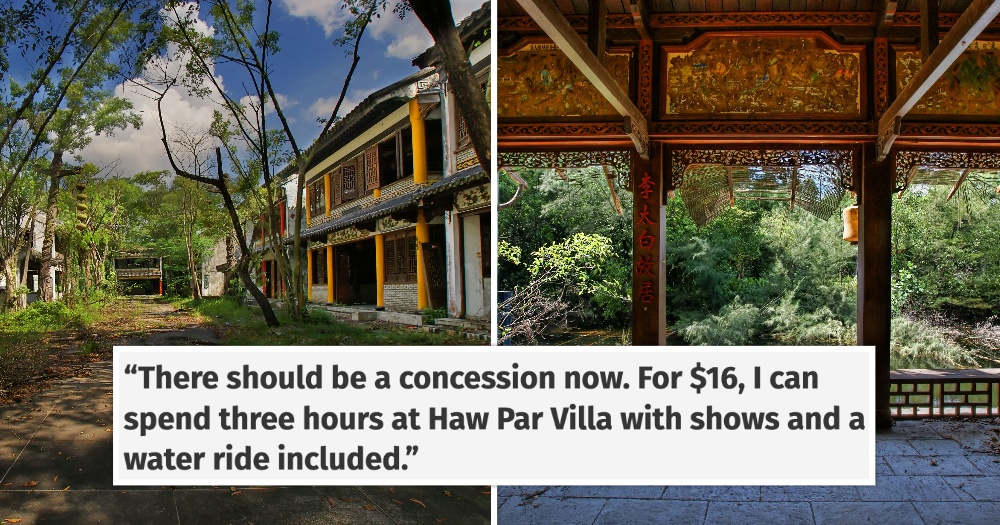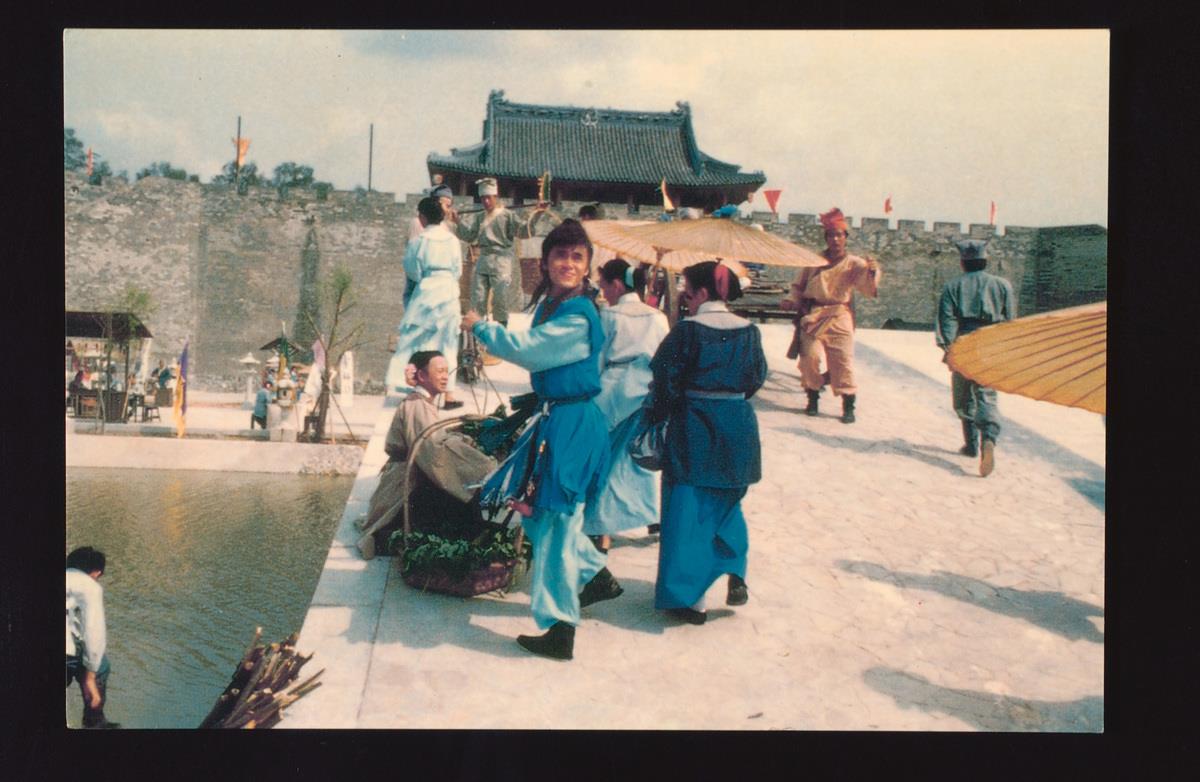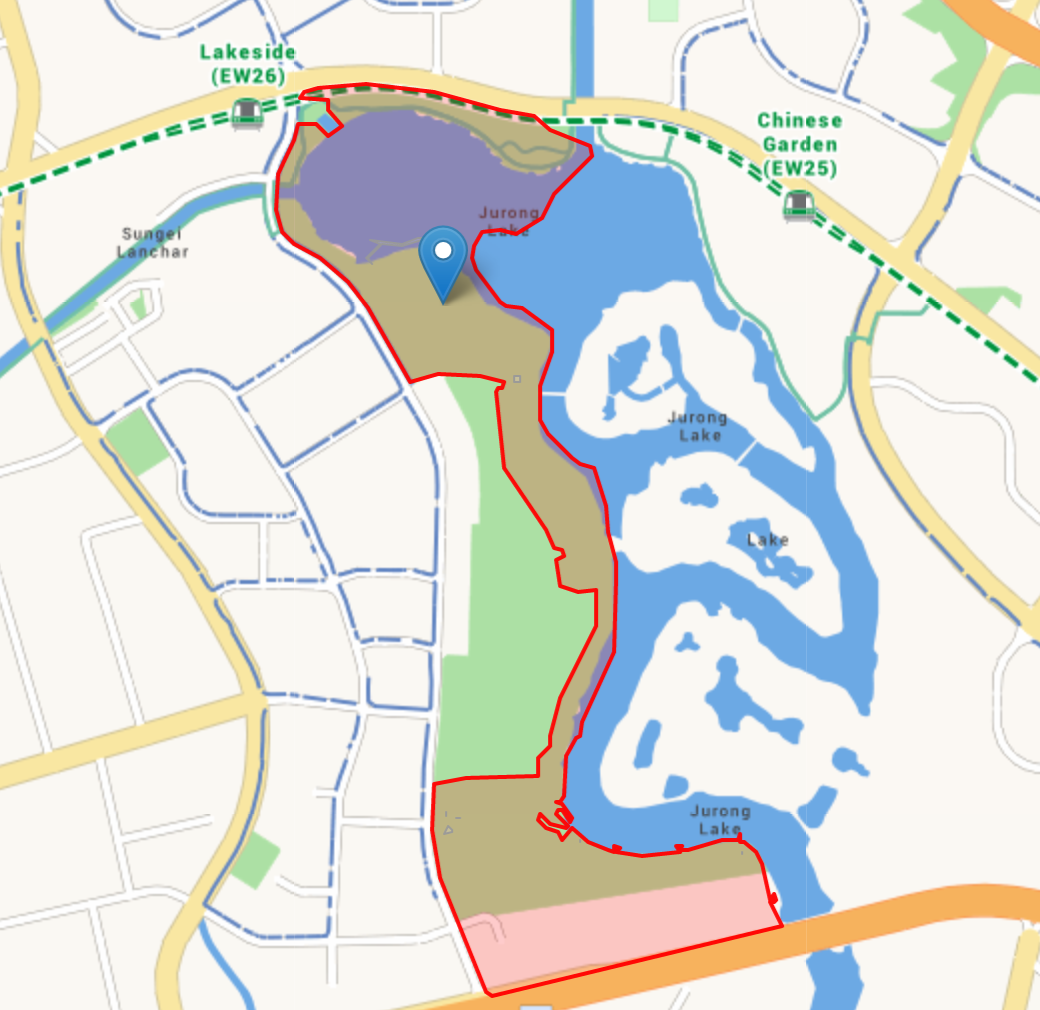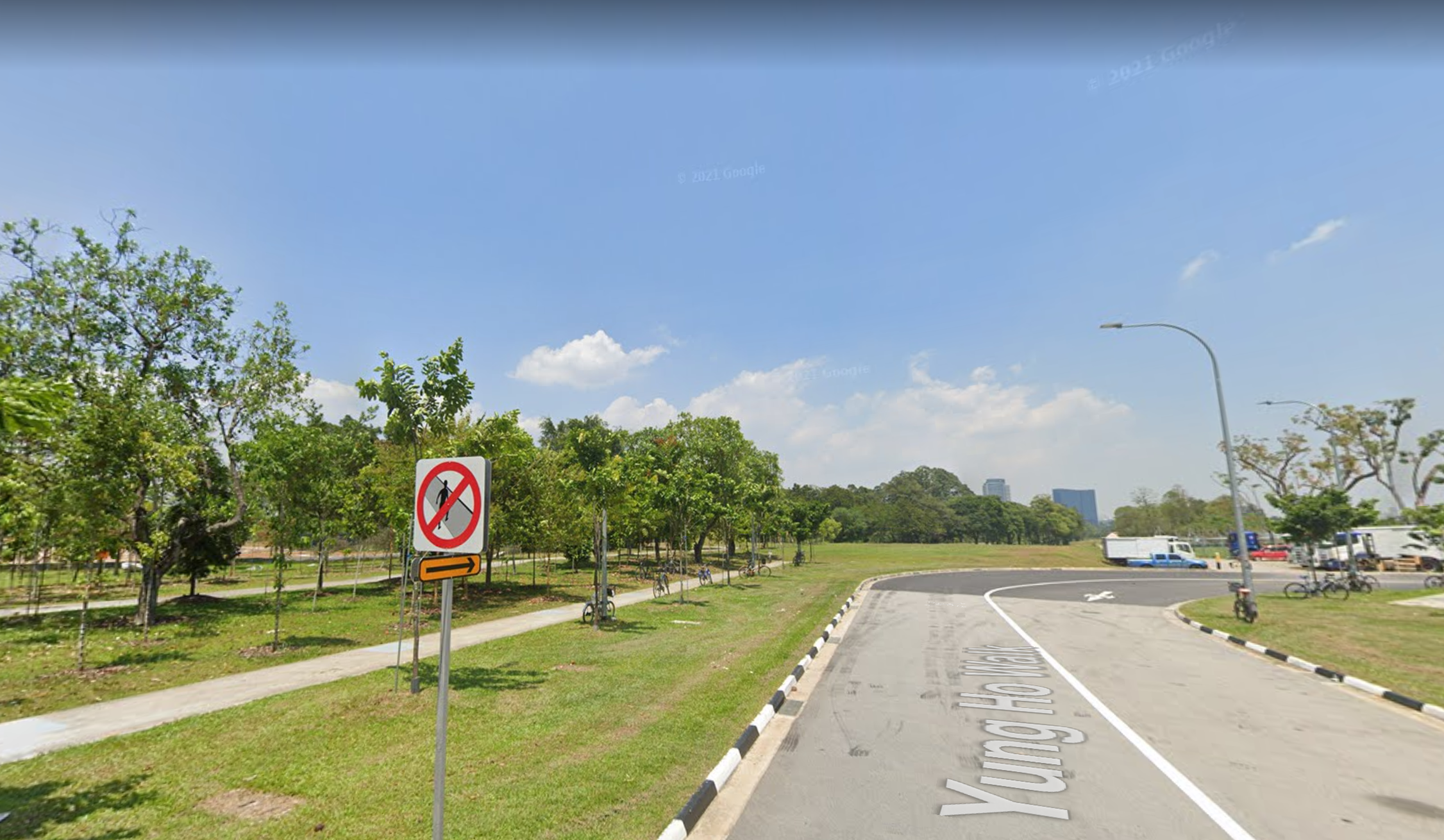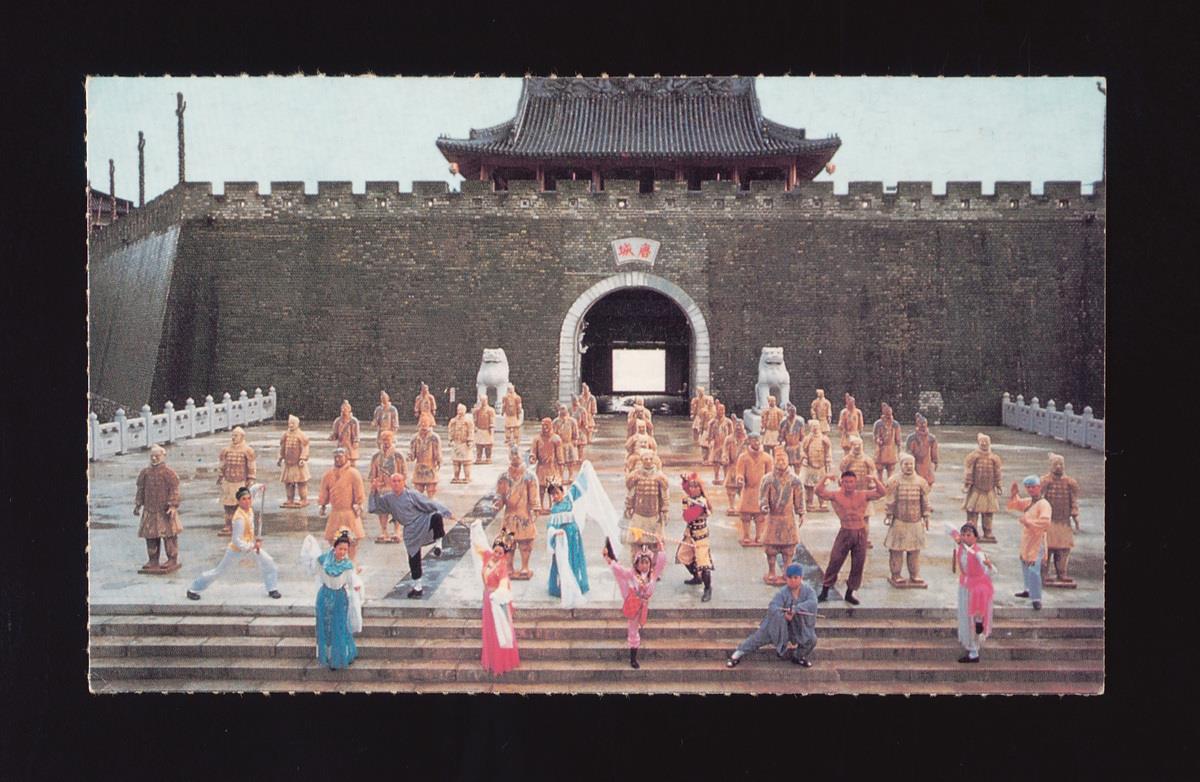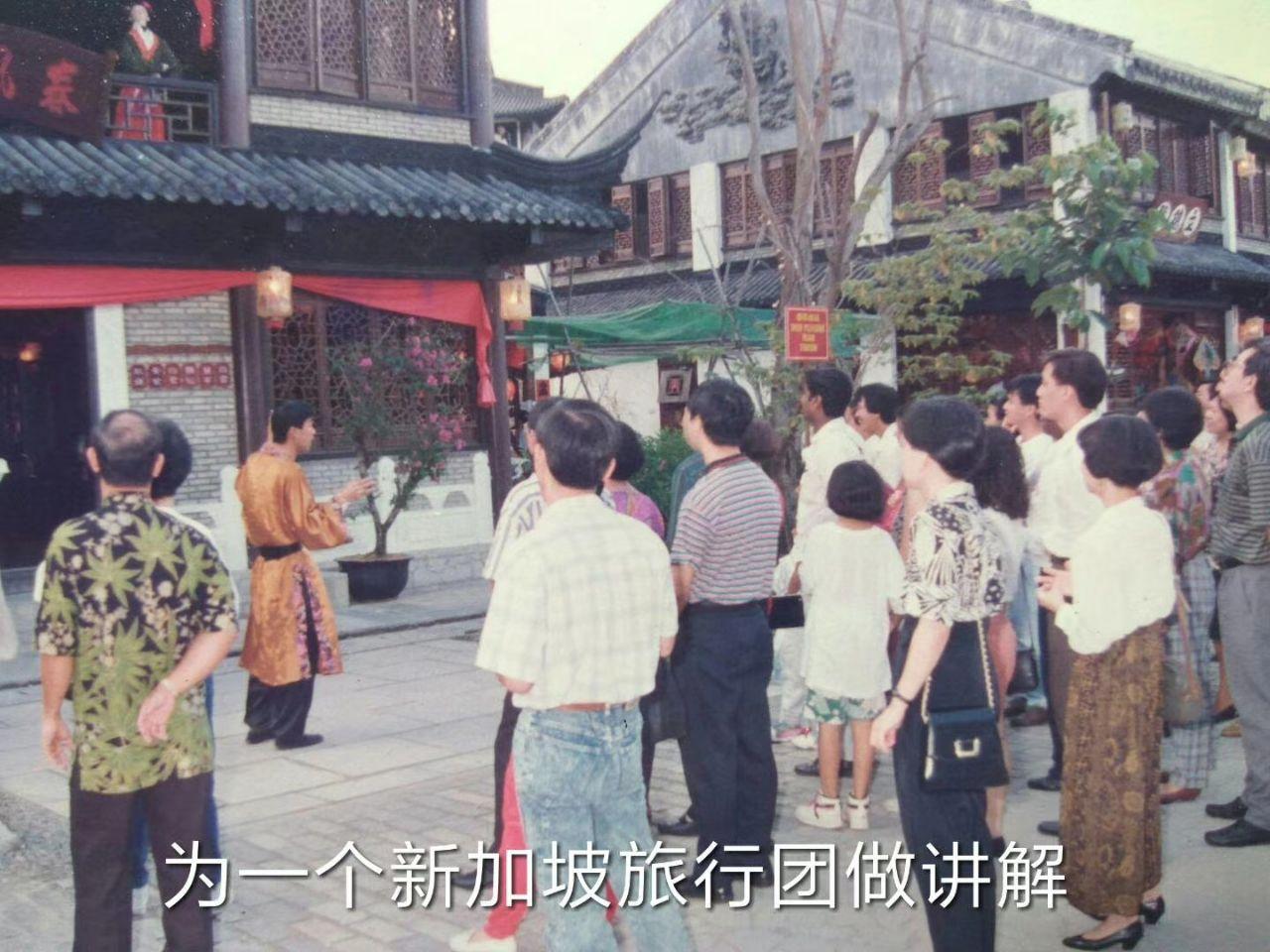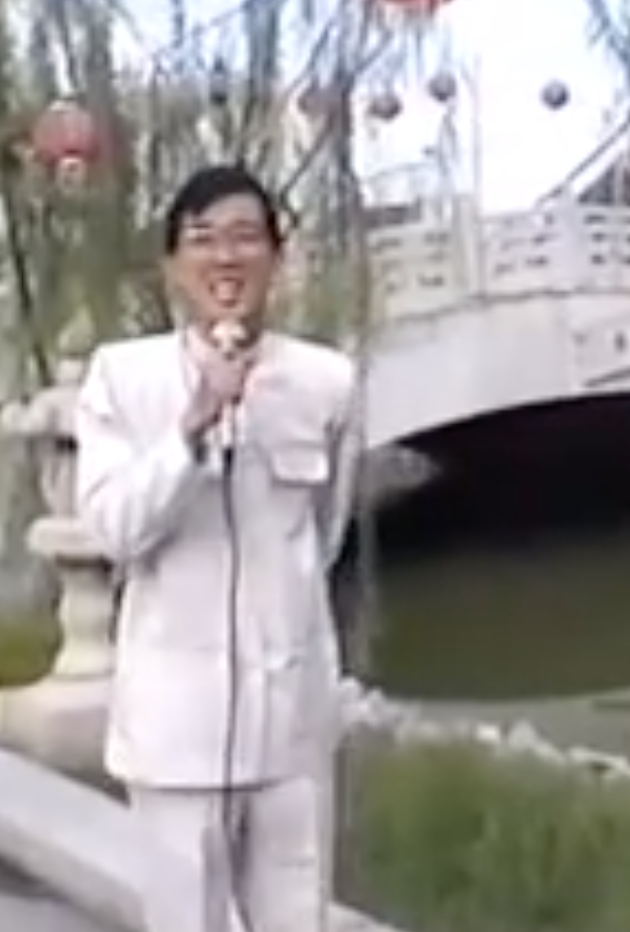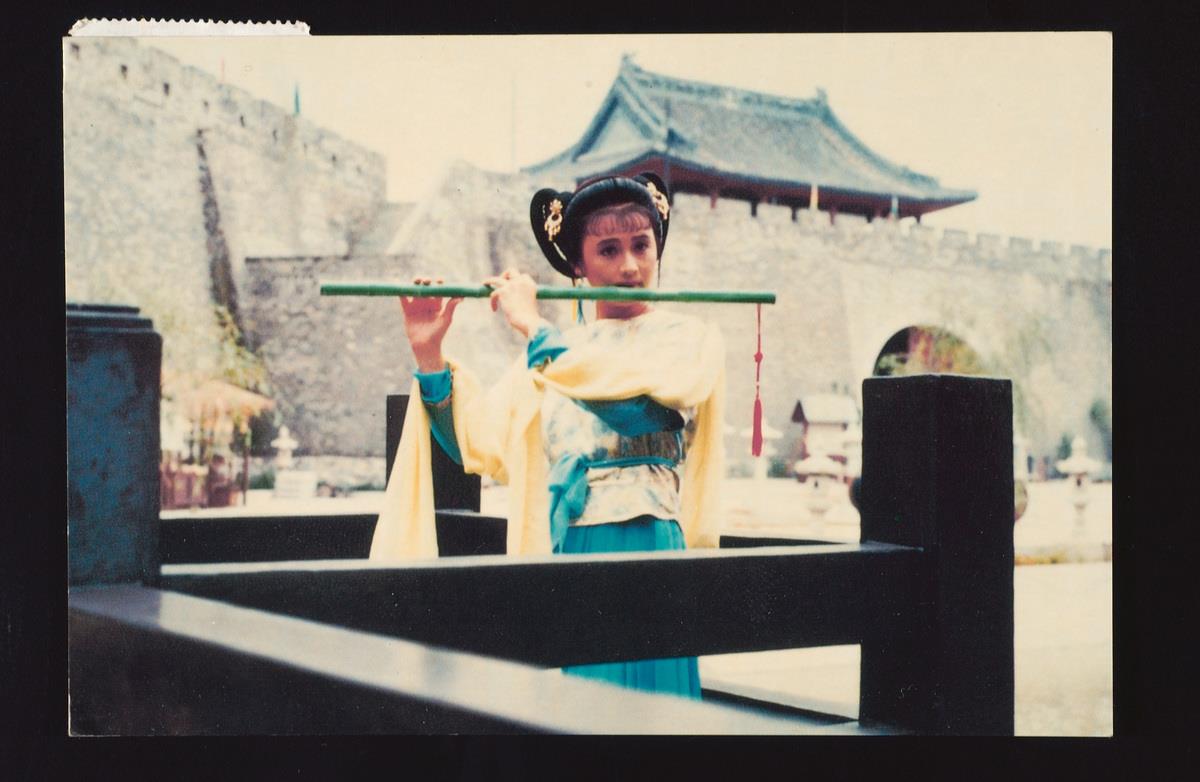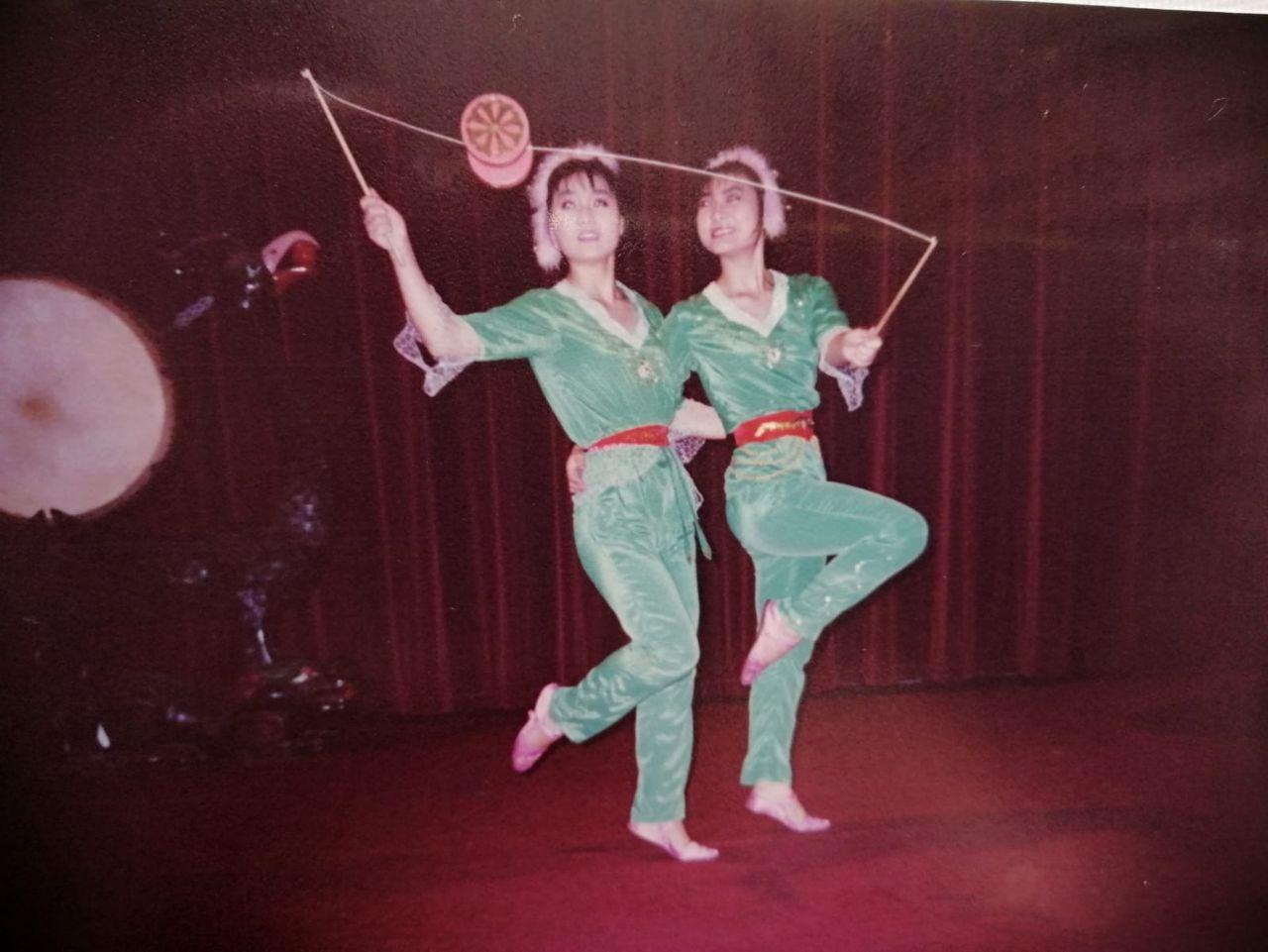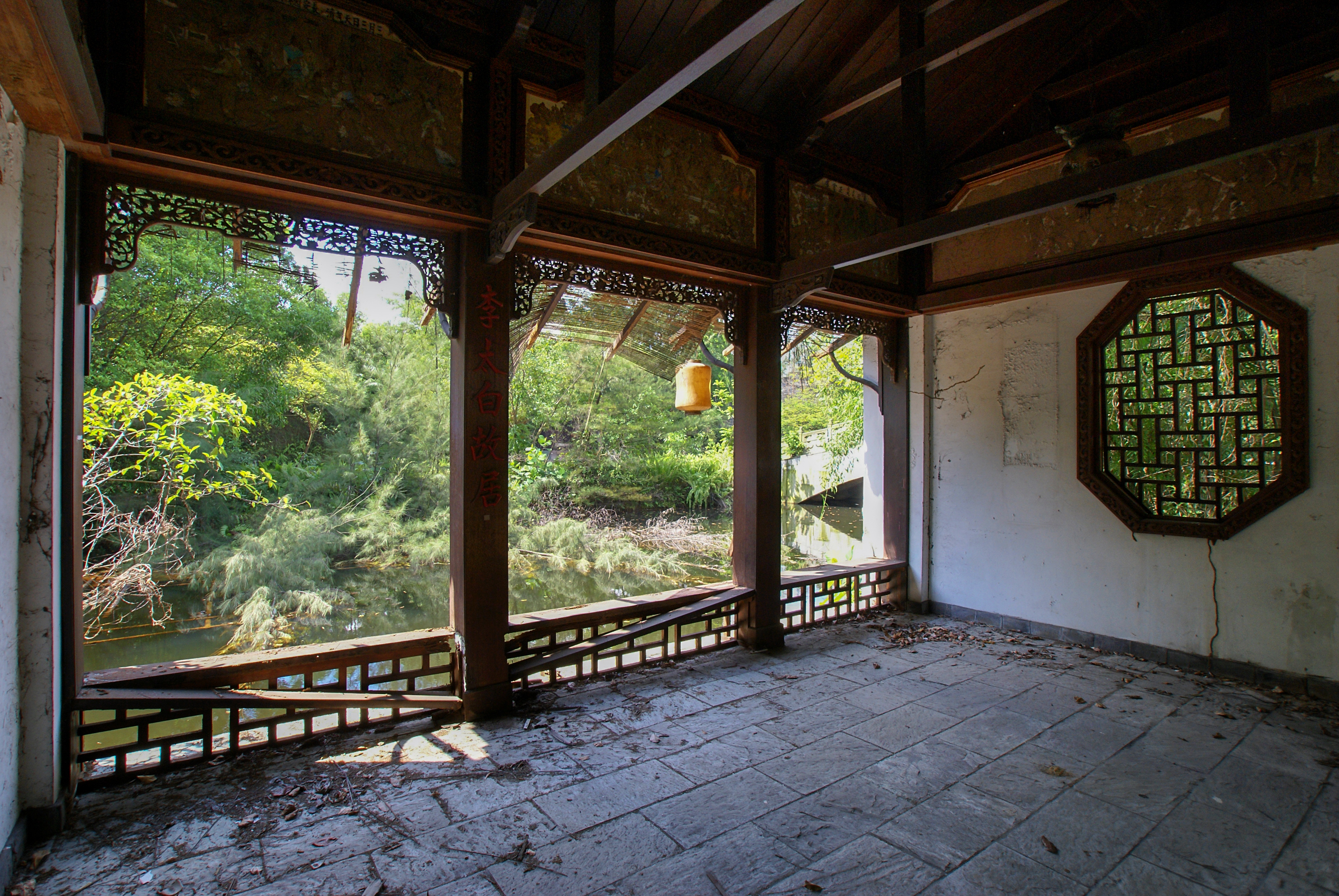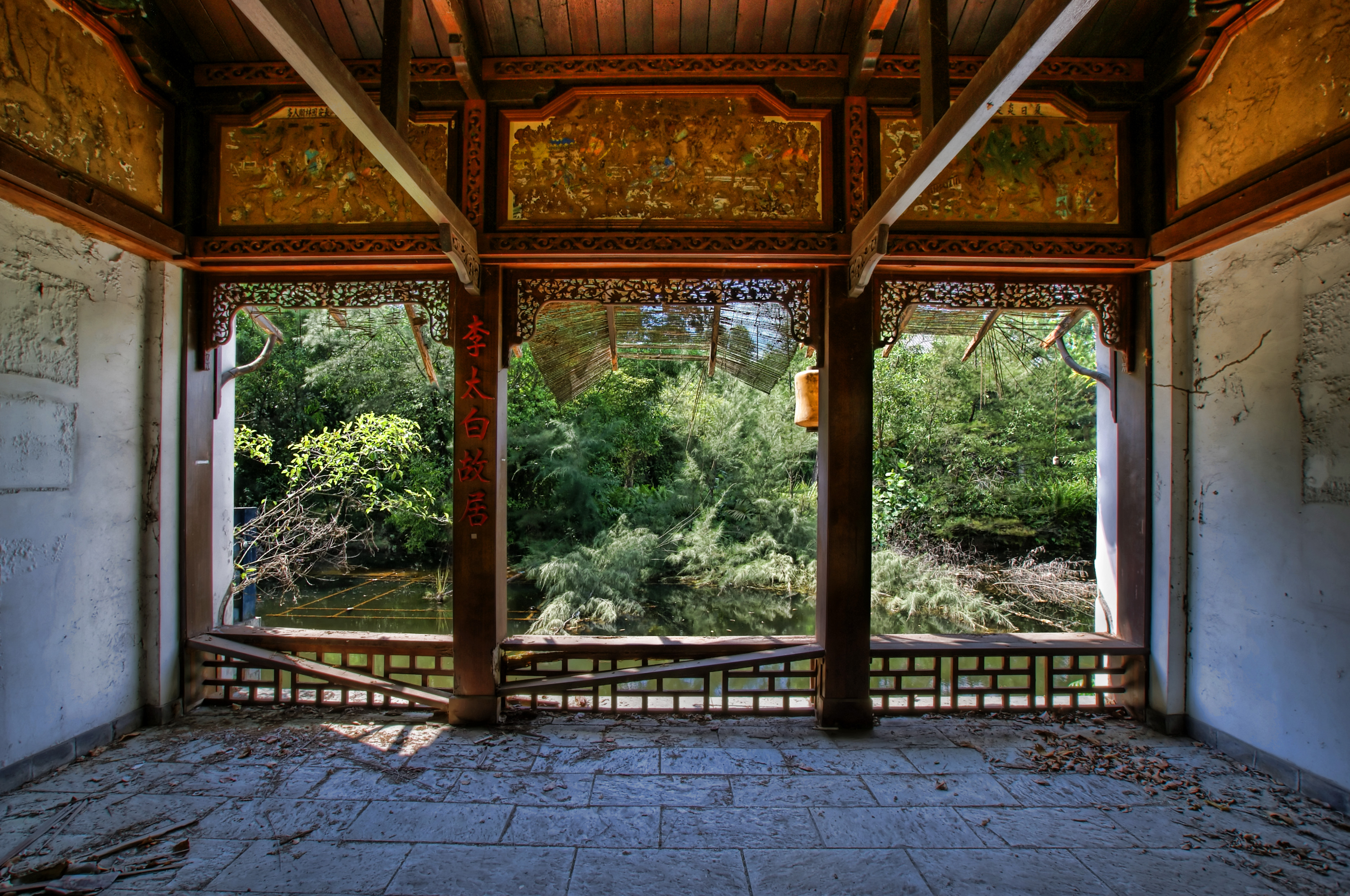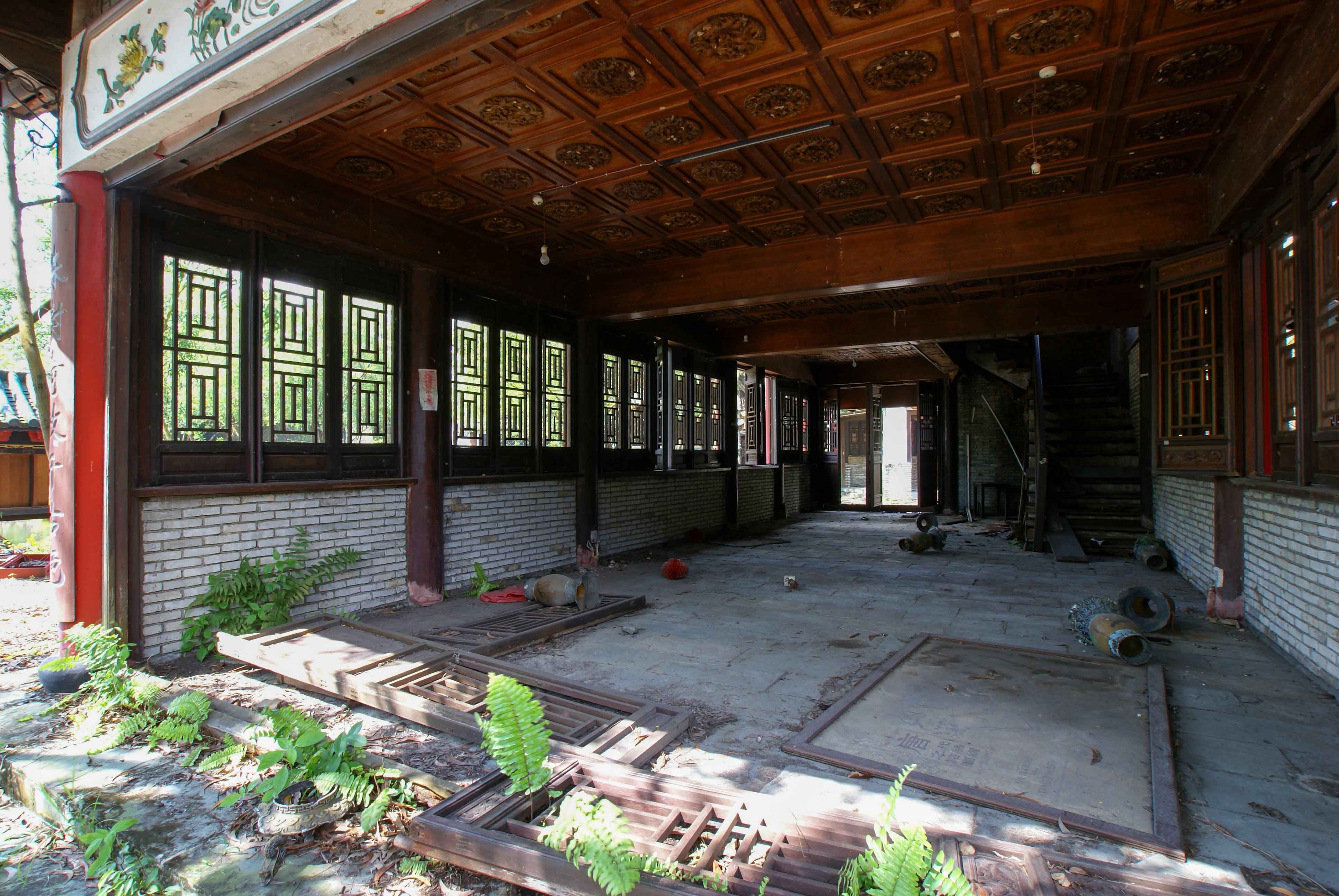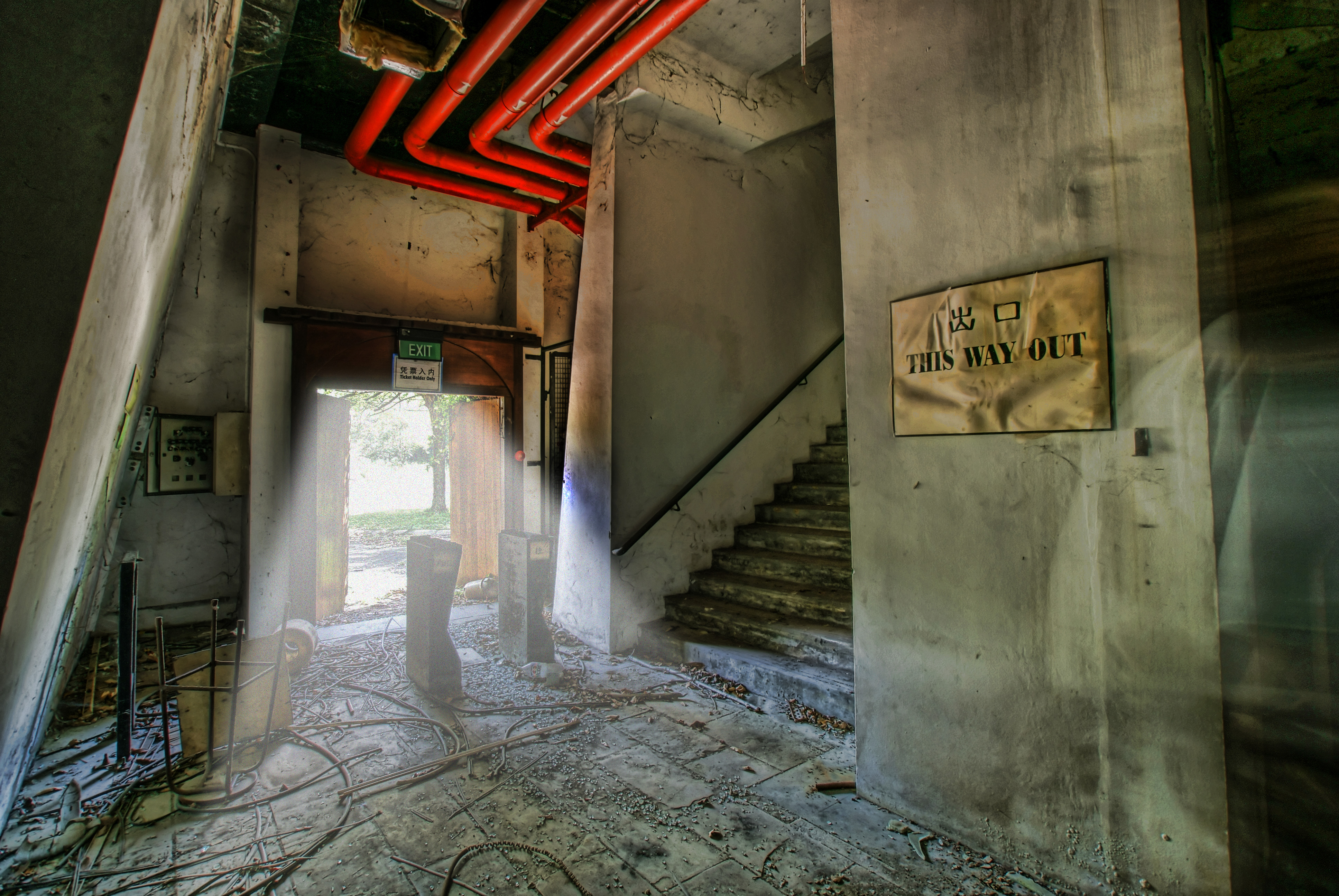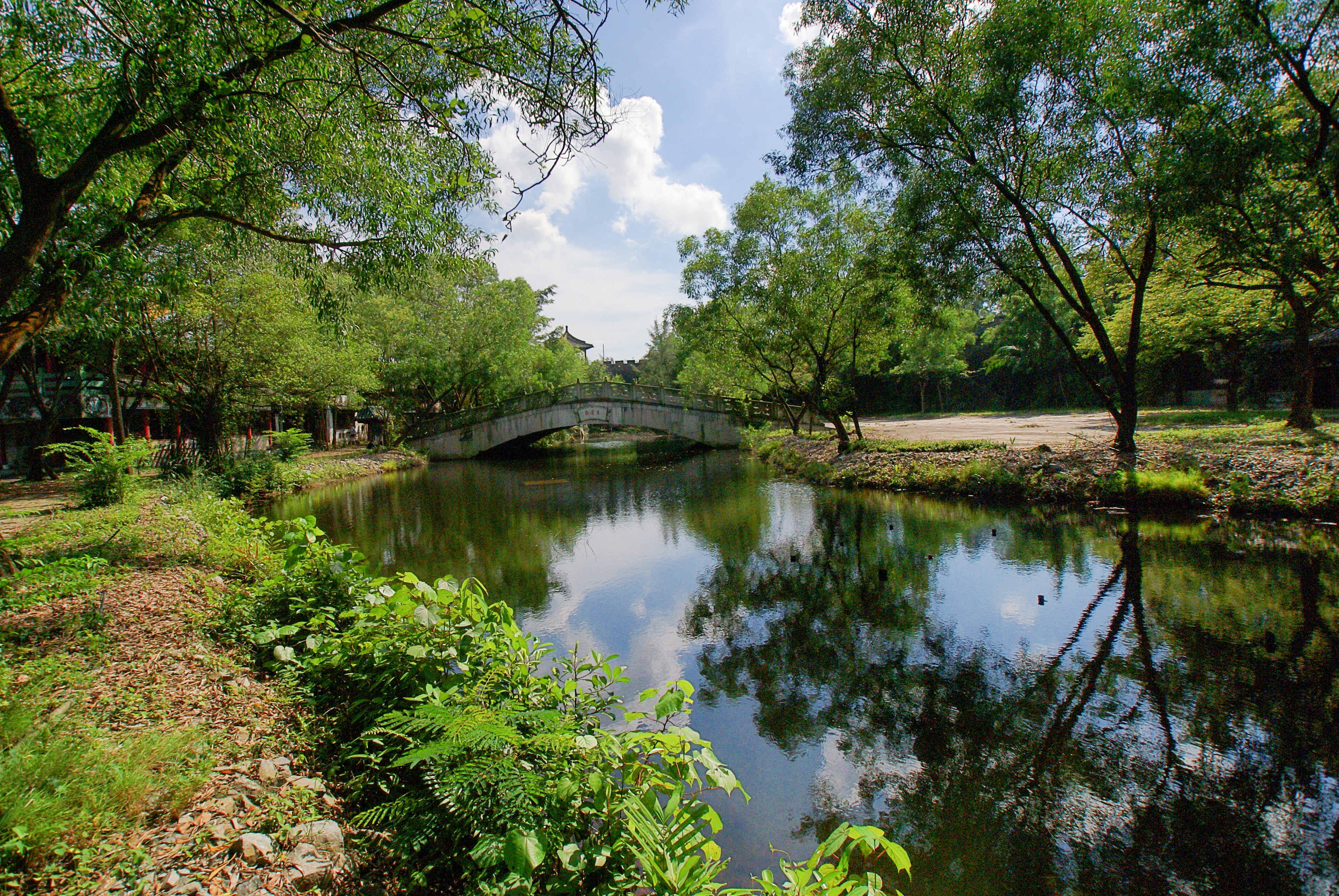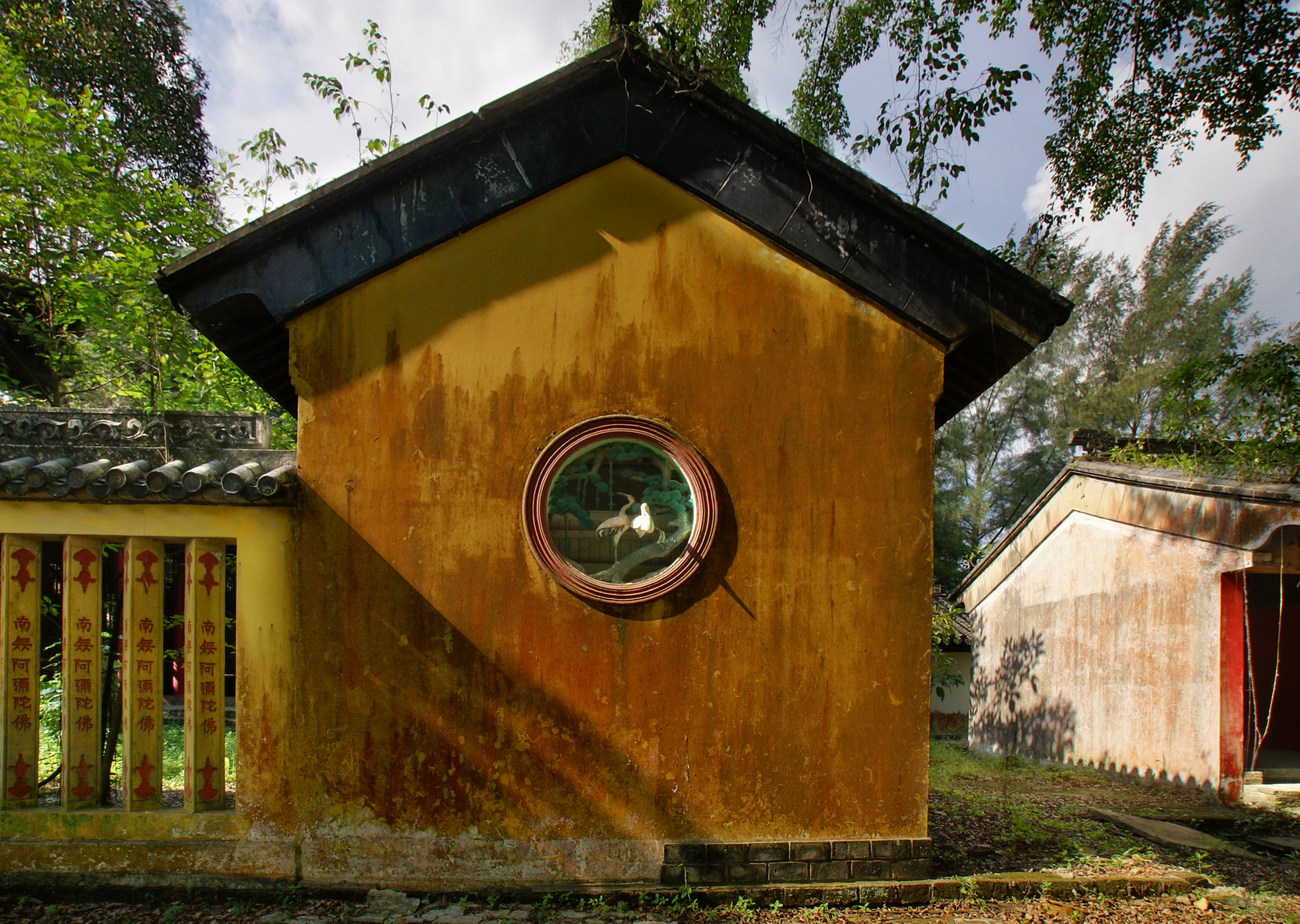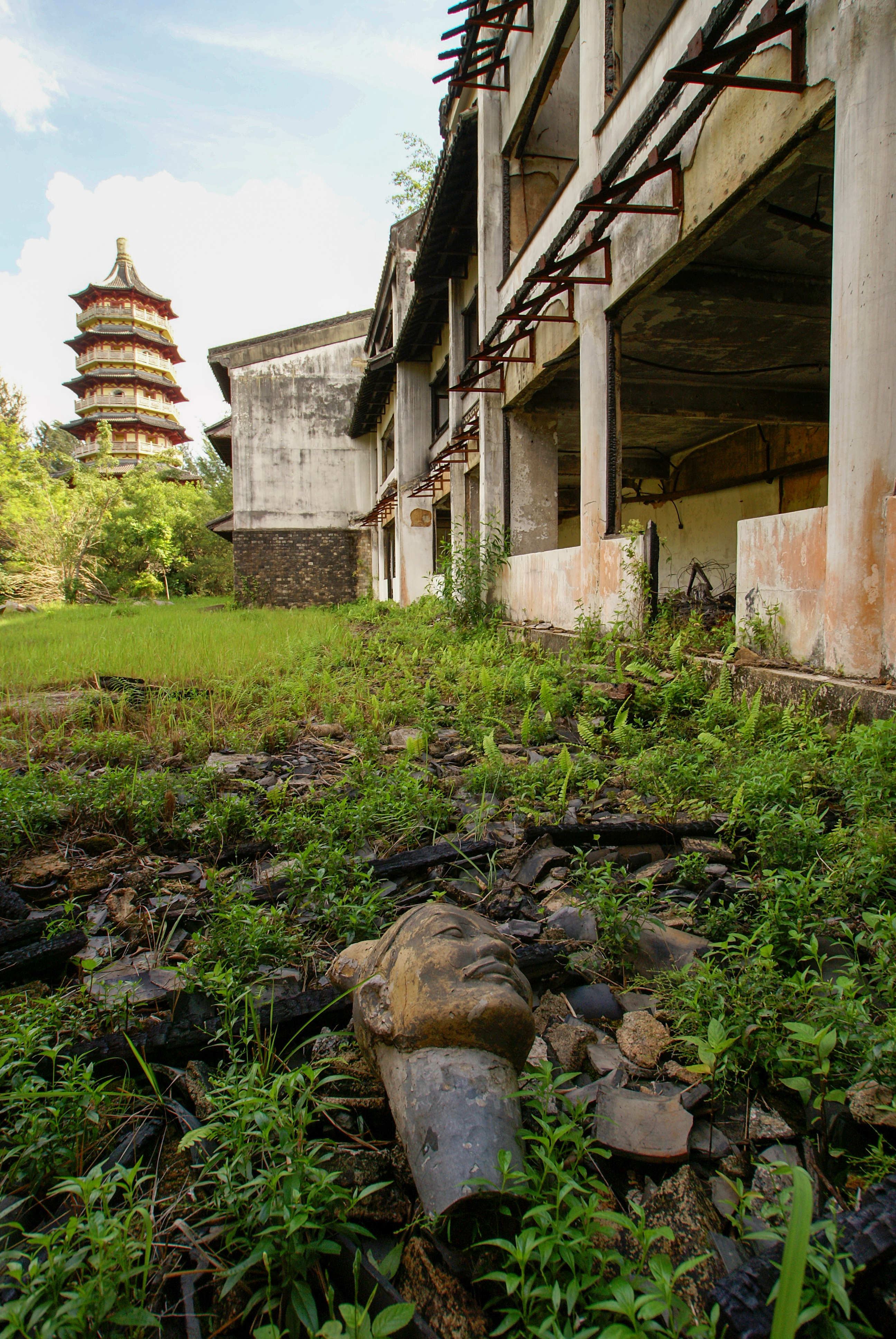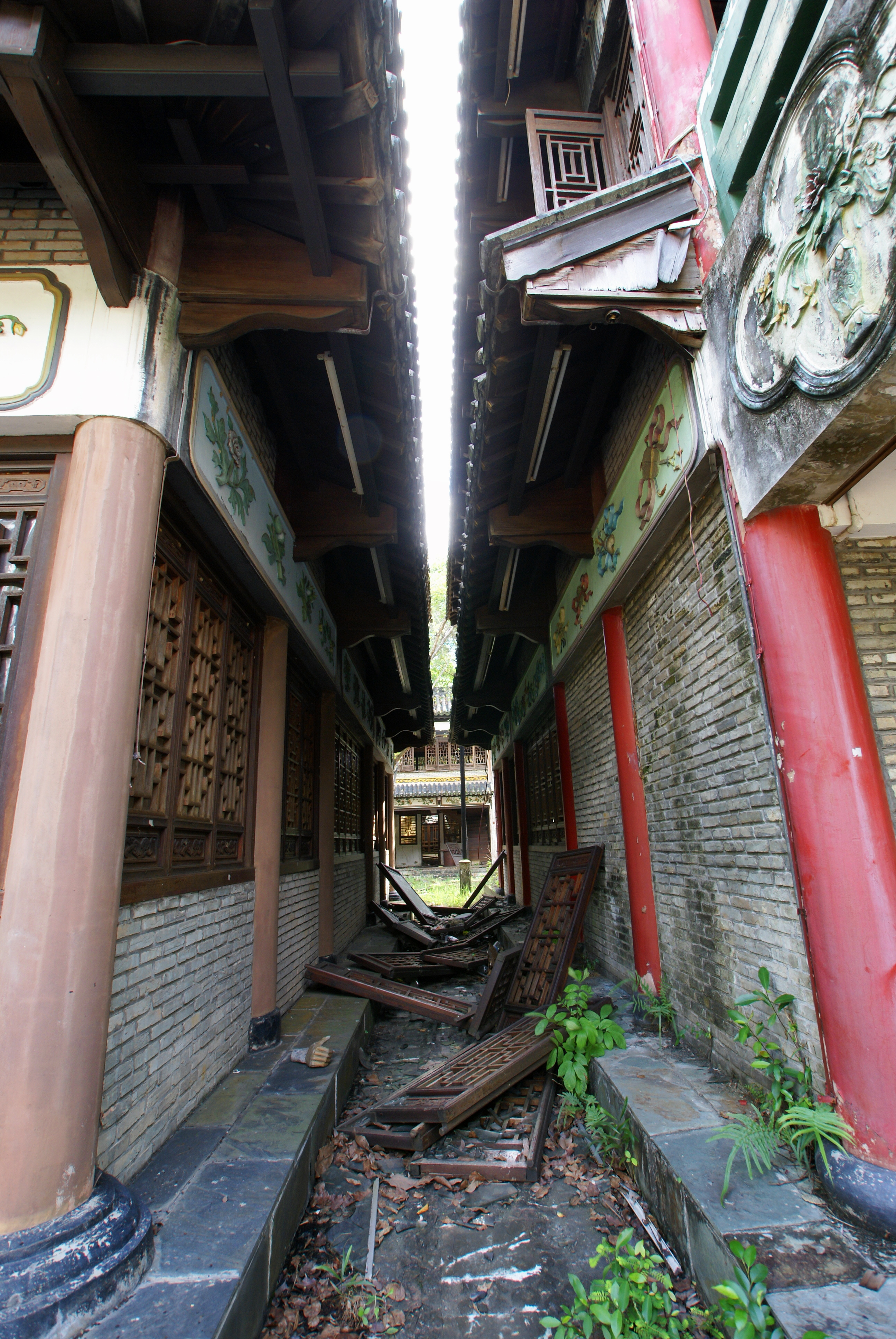The cobbled streets bustled with life as ox carts and horse carriages navigated the sea of human traffic.
Neat rows of ancient Chinese houses line up with their hard hill roofs, while weary visitors rest their legs in teahouses.
Street performers attempt acrobatic tricks and engage in fancy swordplay in the middle of the bridge as crowds gather around to oooh and ahhh. Peddlers line the same arch bridge selling all kinds of ware.
That was a typical scene in Jurong back in the 1990s.
The rise of the Tang Dynasty (City)
Or, at the very least, in one specific part of Jurong.
Quite a substantial part actually.
Slightly less Tang Dynasty vibes in present day Jurong, though:
But back then, it was quite a spectacle—high walls, incredibly detailed architecture, pagodas and (in due time) even terracotta warriors.
The hype was substantial. Deacon Chiu, the Hong Kong tycoon driving the project, spared no expense. The original S$50 million budget increased to S$70 million, with a further war chest of S$100 million being touted.
After it closed, media reports placed the cost of the theme park at an estimated S$100 million.
There were even plans to build a hotel near the theme park.
Terms like "Singapore's own Disneyland" were thrown about. A tie-up with Hong Kong broadcasting company TVB in the form of a charity show was in the works.
The ambitious project called for special building materials from China to be shipped in, with about 100 skilled Chinese craftsmen coming over to work on those materials.
They even had camels in the village (soon to be city).
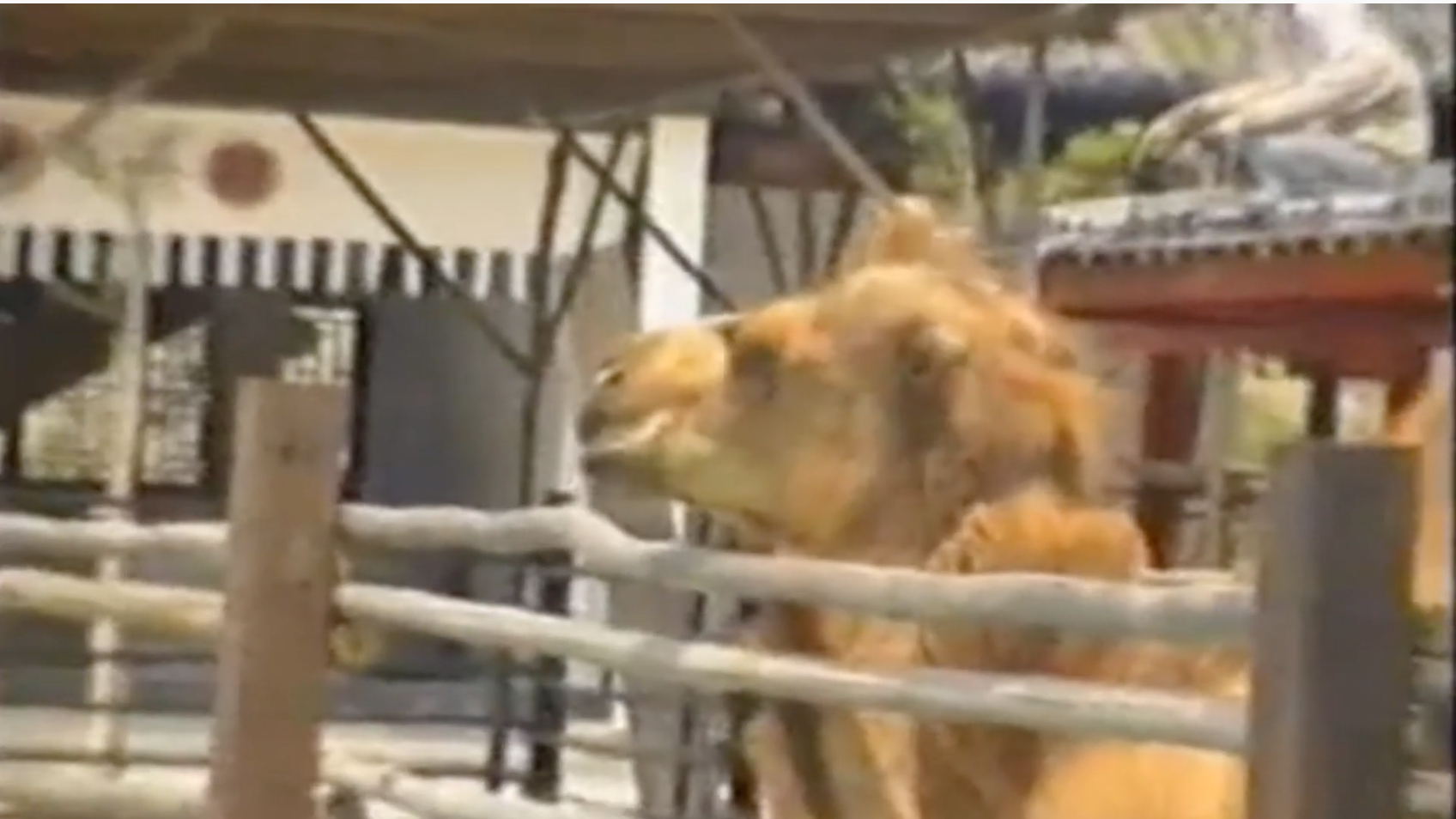 Image via YouTube
Image via YouTube
The theme park was also going to have a dual function as a movie studio as well.
It was all building up to be quite the project.
Despite the hefty price tag, the juggernaut was projected to recoup the then-estimated S$70 million in five to 10 years.
It was against this rather optimistic backdrop that the doors opened on Jan. 12, 1992, to a pitch-perfect recreation of Chang'an (the Tang Dynasty capital) in Jurong.
While there isn't much video footage of the opening day itself, here's a quick rundown of the attraction by two employees from the park in 1994.
The early numbers painted an incredibly rosy picture.
According to The Straits Times, the opening day saw 5,000 people stream into the ancient city, which eclipsed even the Haw Par Villa Dragon World opening, which saw 4,000 attendees.
The upcoming Chinese New Year was also thematically relevant, leading to another boost for Tang Dynasty City (it was changed from Village to City on Jan. 25, 1992).
The five to 10 years projection to recoup the money even seemed kind of feasible.
Unfortunately, in just seven years, the park, riddled with debt, closed down.
What happened?
So what happened in these seven years that led to the fall of the Tang Dynasty City?
Well, let's maybe take a look at how people got around the place.
As expected of a city shaped by the idea of culture and history, there were people constantly talking about said culture and history to visitors.
One has to wonder whether being routinely bombarded with ancient Chinese informational tidbits from a guide would be jarring, especially for younger children.
And don't just take that from me; that is an opinion by someone who was literally one of the guides in the City.
This guy; from the earlier video:
His name is Sylvester Goh, an accomplished emcee who has performed plenty of gigs in Singapore and China.
But back in 1992, Goh had yet to secure a single full-time emcee gig, and he had also bounced around 25 jobs in nine years before landing a role at the newly built Tang Dynasty City.
Goh was a guest relations officer, or in layman's terms, an in-house guide; he did a lot more than guiding — but more on that later.
While he was personally enamoured with Chinese history, religiously read up about the Tang Dynasty, and tried to improvise lines, he noticed that the scripts the guides were given very quickly became predictable and stale.
It was almost a comical contrast between such a vivid interactive historical experience and the same scripted lines being read in front of these intricately designed set pieces.
But the problems don't even start with the guides' scripts; some might argue it started before anyone even entered the park.
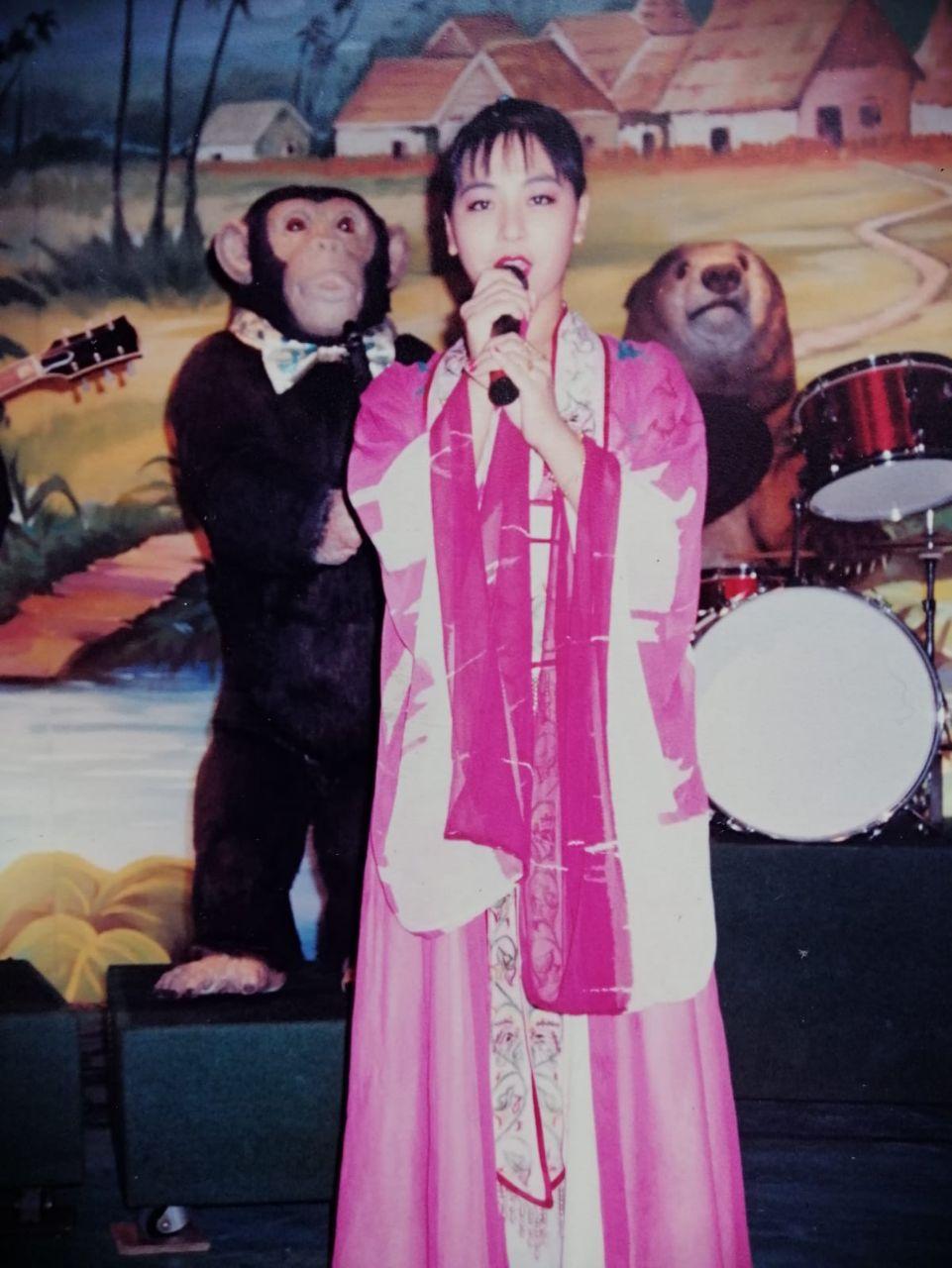 Photo courtesy of Sylvester Goh
Photo courtesy of Sylvester Goh
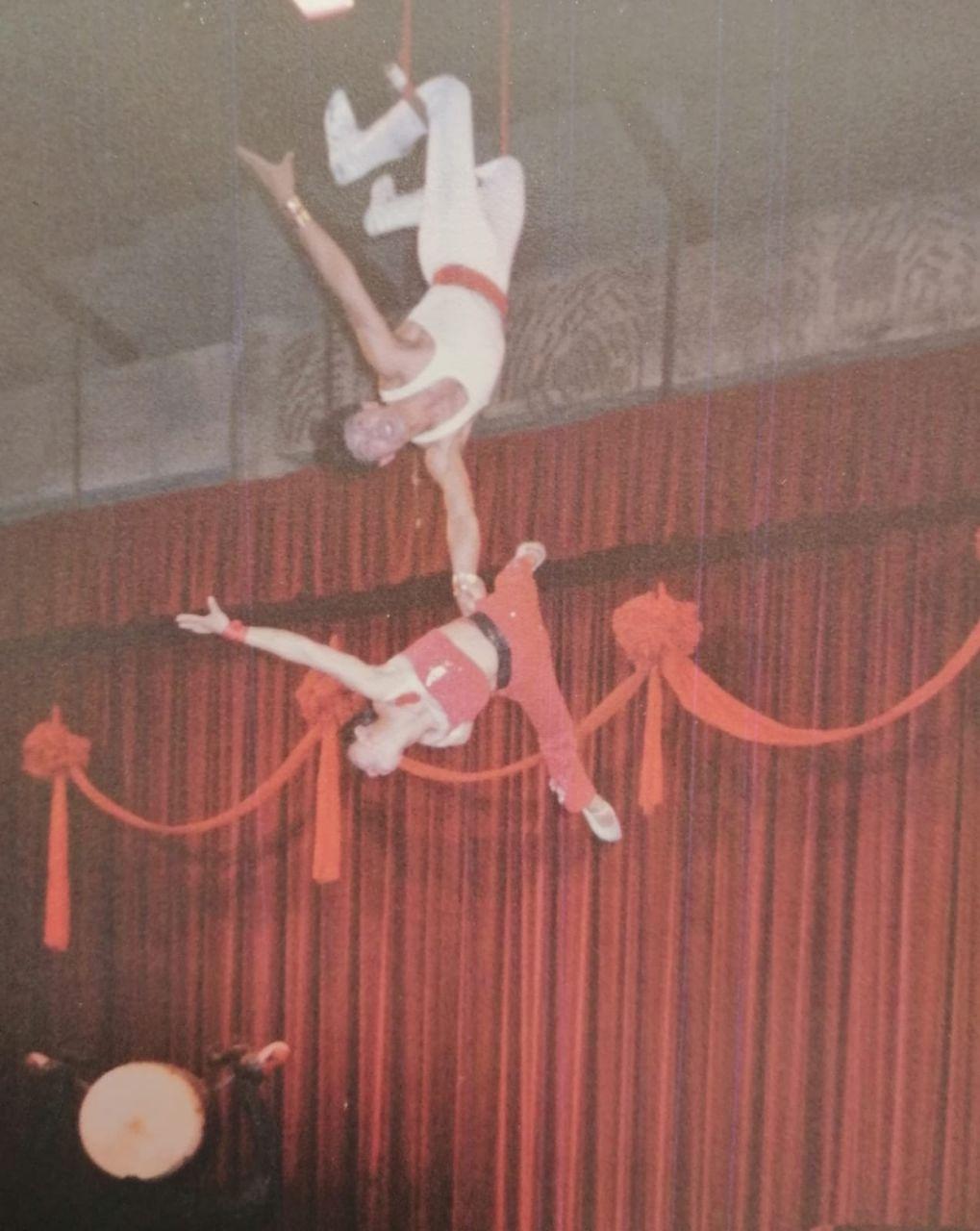 Photo courtesy of Sylvester Goh
Photo courtesy of Sylvester Goh
One of the complaints raised on the very first day of opening was the admission prices.
In a ST article chronicling some reactions to the newly-opened park, half of the park-goers interviewed said the S$15 entrance fee (for adults) was too steep.
"There should be a concession now. For $16, I can spend three hours at Haw Par Villa with shows, and a water ride included."
A point Goh agreed with, saying that it might have been a turn-off for families looking for somewhere to spend their weekends.
It's important to note that Haw Par Villa Dragon World also touted a S$15 admission fee when it first opened in 1990.
However, it is also important to note that S$15 back then was nearly five times the entrance fee to Sentosa.
Even more important to note is this succinct ST forum letter that came about due to the Haw Par Villa entrance fee:
"$15 Haw Par Villa tickets too expensive"
Forum letters are the best.
Shockingly, S$15 was already a reduction from the initially proposed S$25 fee before the City opened.
In 1999, seven years later, just before Tang Dynasty City closed its doors, they were offering tickets to locals at S$7 each.
What was it supposed to be?
Perhaps a question more central to its demise, more so than ticket prices and stale scripts, was what exactly the theme park was about.
Was it supposed to be educational?
That appears to be somewhat the intent, judging by all the factoids the guides were meant to memorise.
But then, could it compete with other parks more purely geared toward entertainment?
Maybe it was supposed to be a theme park?
Sure, in the loosest sense of the word. But for all its merits, the lack of rides seemed to dampen the theme park experience.
The live performances were often considered by far the most entertaining aspect of the attraction by park-goers, acrobats performing extraordinary routines; sword fights breaking out in the middle of the arch bridge, things that generally felt like a spectacle.
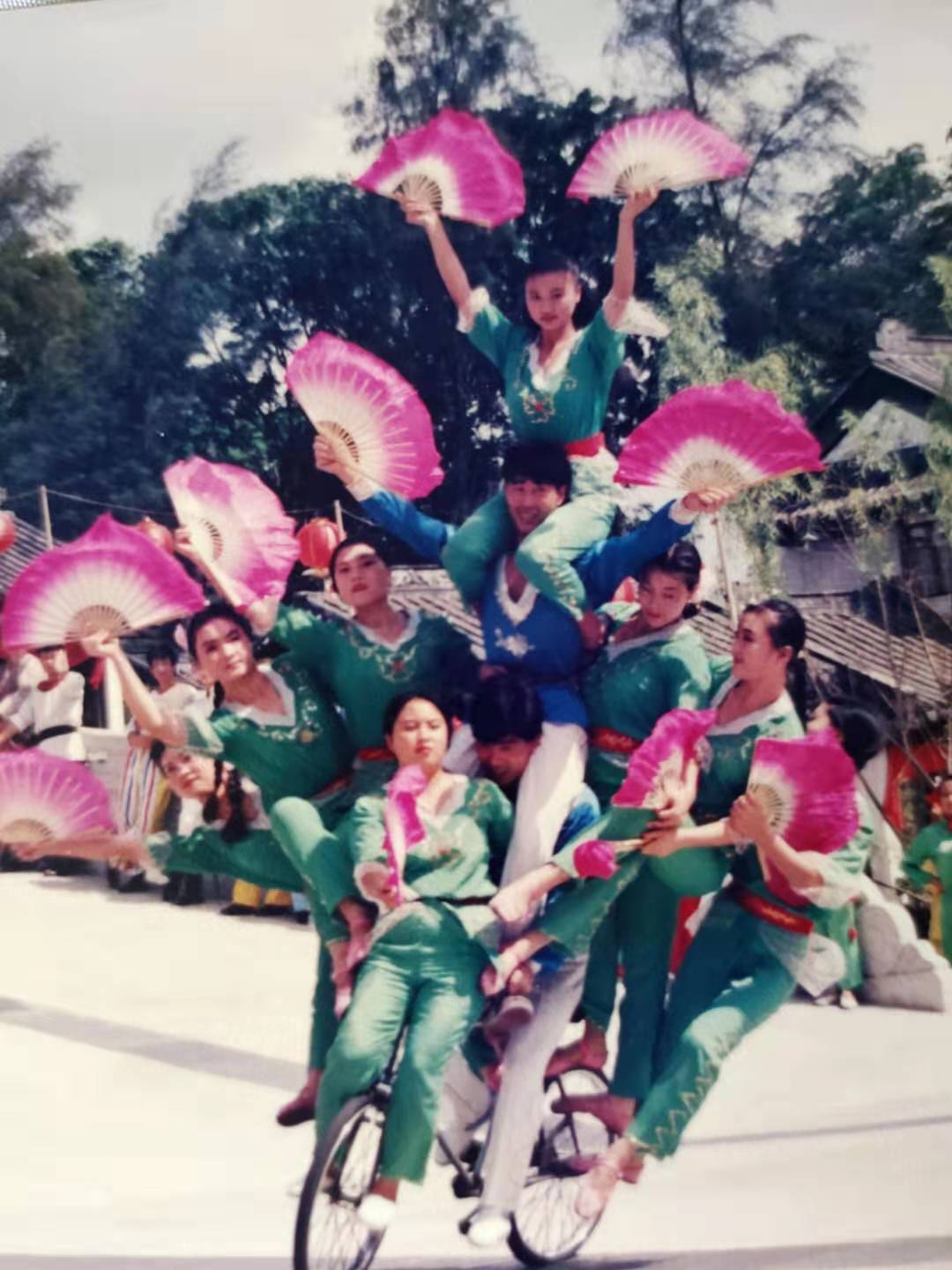 Image courtesy of Sylvester Goh
Image courtesy of Sylvester Goh
But unfortunately, there didn't seem to be enough of these performances to consistently engage the crowd.
It's not like they didn't try to innovate either. There were plenty of attractions introduced during the seven-year run. There was an "earthquake" machine, a S$30 million laser game where you could shoot down sensor-operated life-sized monsters and demons, and even a haunted house.
The haunted house was especially popular.
Visitors (16 at a time) would enter a "ghost mansion", replete with dim lighting, robotic statues and some animatronics.
Of course, as always, a guide is also with you.
Visitors were then brought to a dining chamber where the guests were seated and given headphones.
The lights were then cut off completely. Eerie sounds and ghostly words were played through the headphones and the visitors had to deal with it in total darkness.
Goh recalled how some faint-hearted visitors could be heard chanting A Mi Tuo Fo.
Some unprepared children even cried on a few occasions. But there was plenty of fun in getting spooked for more adventurous visitors.
Interestingly enough, the actual Tang Dynasty City was also rumoured to be haunted, with security guards reporting ghostly sightings in the area after hours. Apparently, post-6pm was the rough time when the apparitions made their presence felt, so it was wise to skedaddle by then.
However, Goh, who has stayed beyond 6pm, did not experience these happenings.
"The security guards on overnight shifts and performers had reported ghostly sightings. I sometimes slept overnight also, but never encountered any of those things."
Regardless of the existence of resident poltergeists, the City was quickly becoming an actual ghost town.
How about as a film studio?
Now, this was an interesting case.
The many media reports before the opening almost always described the attraction as a "movie studio cum theme park".
The crux of their ten-year investment return appeared to hinge on the movie studio aspect in no small part. According to a Business Times article in 1989, the film studios were expected to produce three movies every year.
The Singapore Economic Development Board had given Far East Holdings International (the company behind the theme park) a 10-year tax holiday as part of its efforts to promote the film industry in Singapore.
It is not clear exactly how many films were shot in the studios.
Goh said that only one Hong Kong film appears to have been shot primarily in Tang Dynasty City: the 1993 Chinese New Year comedy "All's Well, Ends Well Too" featuring notable Hong Kong stars like Sandra Ng, Sam Hui, and the late Ng Man Tat and Leslie Cheung.
Media reports from that time suggest at least one other Hong Kong movie, "Eight Hilarious Gods", was also partly filmed there.
While it is unclear why there weren't more films shot in the Tang Dynasty City, Goh noted a perhaps unforeseen issue of running a hybrid movie studio theme park.
He remembered when some particularly famous Hong Kong actors were shooting an outdoor scene.
Nothing too unusual on the movie studio side of things, but an incredibly novel experience for your average theme park-goer.
So now you have a bunch of curious bystanders jostling to catch a glimpse of a big regional movie star.
However, the jostling leads to a whole myriad of problems for a film crew just looking to get the scene over and done with. Exasperated, they might request the gathering crowd to give them some space, perhaps with not too polite a tone or word choice.
In their minds, there probably was no need to treat these people with kid gloves; that's not what they were there for. They were there to shoot a movie.
However, the park-goers probably had little incentive to give too much consideration to the filming process.
They were there to enjoy the park, and remember, they paid $15 to do so. Getting chastised for just walking within the park might not be the best way to ensure a repeat visit.
Goh said he thought more could have been done to ensure visitors were informed of proper etiquette while watching the shoot, including getting the staff to help out on this.
Little things, big things
It was these little ideas, improvements, and ground-up initiatives that Goh spoke most fondly of.
He recalls changing the dull anaemic prop swords to weapons of a sturdier material (still safe, although there were a bit more knocks here and there) to achieve a more satisfying clanking noise for the live shows.
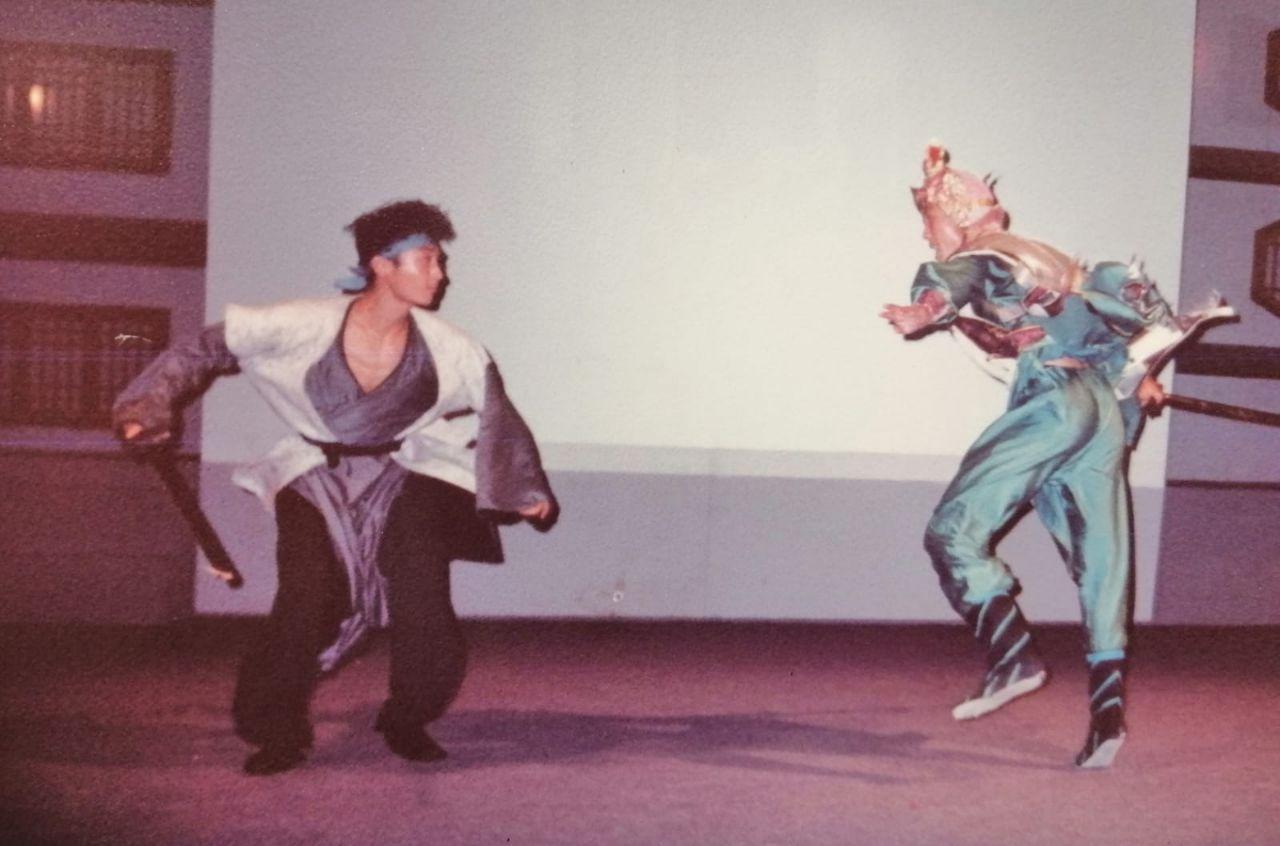 Image courtesy of Sylvester Goh
Image courtesy of Sylvester Goh
He also suggested pre-recording lines for performers to provide a better auditory experience for guests and to let them focus on the performing aspect.
But there are limits to the changes any one employee can make.
When I asked him what he thought contributed to the demise of the City, Goh pointed to an unexpected factor — the lack of air-conditioning.
Goh said that only a few areas in the 12-hectare theme park had air-con. Whatever little enthusiasm the general public had for cultural understanding, he opined, would be sweated out during the visit.
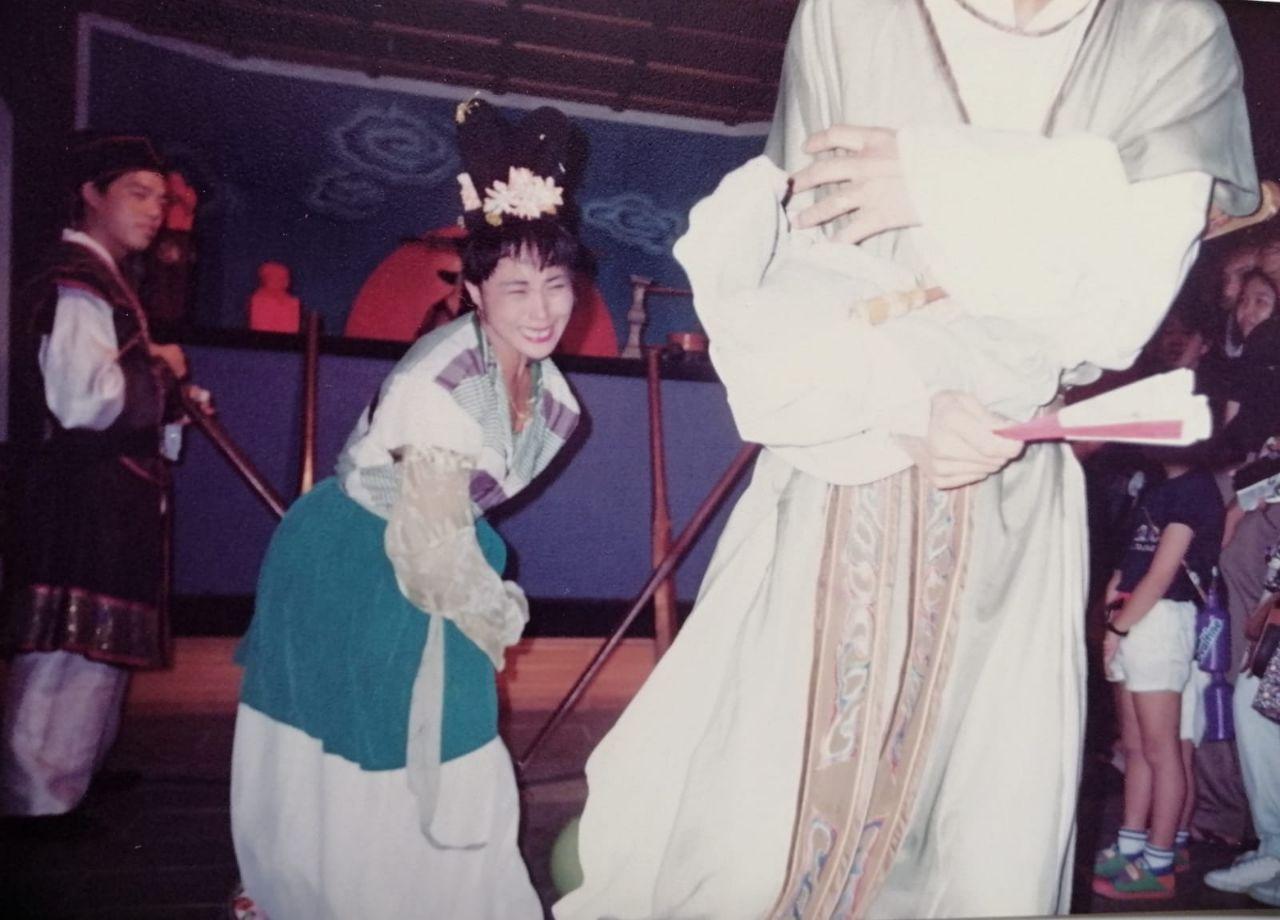 Image courtesy of Sylvester Goh
Image courtesy of Sylvester Goh
Surprisingly, the issue of air-con was also brought up during a 1995 review to find out why the attraction was doing so poorly.
Here is the conclusion that was reached:
"The architect did not take into account the great difference in weather between China and Singapore."
But if things like minor tweaks in products or poorly thought-out semi-new offerings were the lack of binoculars on the Titanic, Tang Dynasty City was also simultaneously facing iceberg-ian factors on the horizon as well.
In the aforementioned review, more macro reasons like the opening up of China were brought up. Further down the road, media reports would cite other macro factors such as the Asian Financial Crisis, increased land rent and lack of manpower as contributing to the closure.
Whatever the reasons were, by the end of its run, around 1999, a ST article painted quite the dreary picture of life in Tang Dynasty City.
"When The Straits Times visited the park last Tuesday, there was only a sprinkling of visitors. The guide stationed at the Ghost Mansion declined twice to take ST on a tour, saying that there were not enough people to make up the numbers.
Many of its attractions, such as the Underground Palace and the Courthouse, looked worse for wear.
The Courthouse displayed rosewood and wooden furniture, but little else. The grass field in front of the White Horse Temple was water-logged and filled with weeds.
The performance by three gongfu masters was over in five minutes and featured few stunts. The actors were even late for their performance, arriving a few minutes after the music started."
The Tang Dynasty replica eventually died out, not with a bang but with a whimper. There were no peasant rebellions that brought it down; if anything, they could have used some of them as customers.
Attendance started rather poorly.
According to a 1994 survey of over 10,000 overseas visitors by the Singapore Tourist Promotion Board, only 1.6 per cent of these 10,000 had visited Tang Dynasty.
For comparison, Haw Par Villa Dragon World attracted 9.1 per cent of those visitors, while about 40 per cent had taken trips down to Sentosa.
And it only got worse from there, with a 7.4 per cent decline in visitors in 1995.
Nothing worked.
They went so far as to run a promotion with Zaobao during the Chinese newspaper's 75th anniversary, where tickets were going for only S$1 each. Sure, about 18,000 people showed up on the day, but that did not seem to do much to secure their long-term future.
Even a change of ownership in 1996 could not turn their fortunes around.
On Aug. 21, 1999, the owner of Tang Dynasty City placed itself under judicial management. They owed creditors up to S$62 million.
It seemed to signal the end of a dynasty.
Closure and openness
Or did it?
A rather fascinating aspect of the park was the way it closed down. Establishments closing or being torn down quickly to make way for newer buildings was nothing out of the ordinary for Singapore.
This one was slightly different.
Tang Dynasty City ironically lasted longer as an abandoned theme park (1999-2008) than a functioning one (1992-1999).
There were plans for a few revamped concepts, including a Shaolin-themed resort, but all of them ultimately fell through.
While the various stakeholders racked their brains thinking of a fresh and novel concept to bring in people, Singaporeans themselves seemed sufficiently chuffed with what had been left behind.
The heavily choreographed, money-burning Tang Dynasty replica now carelessly reclaimed by nature.
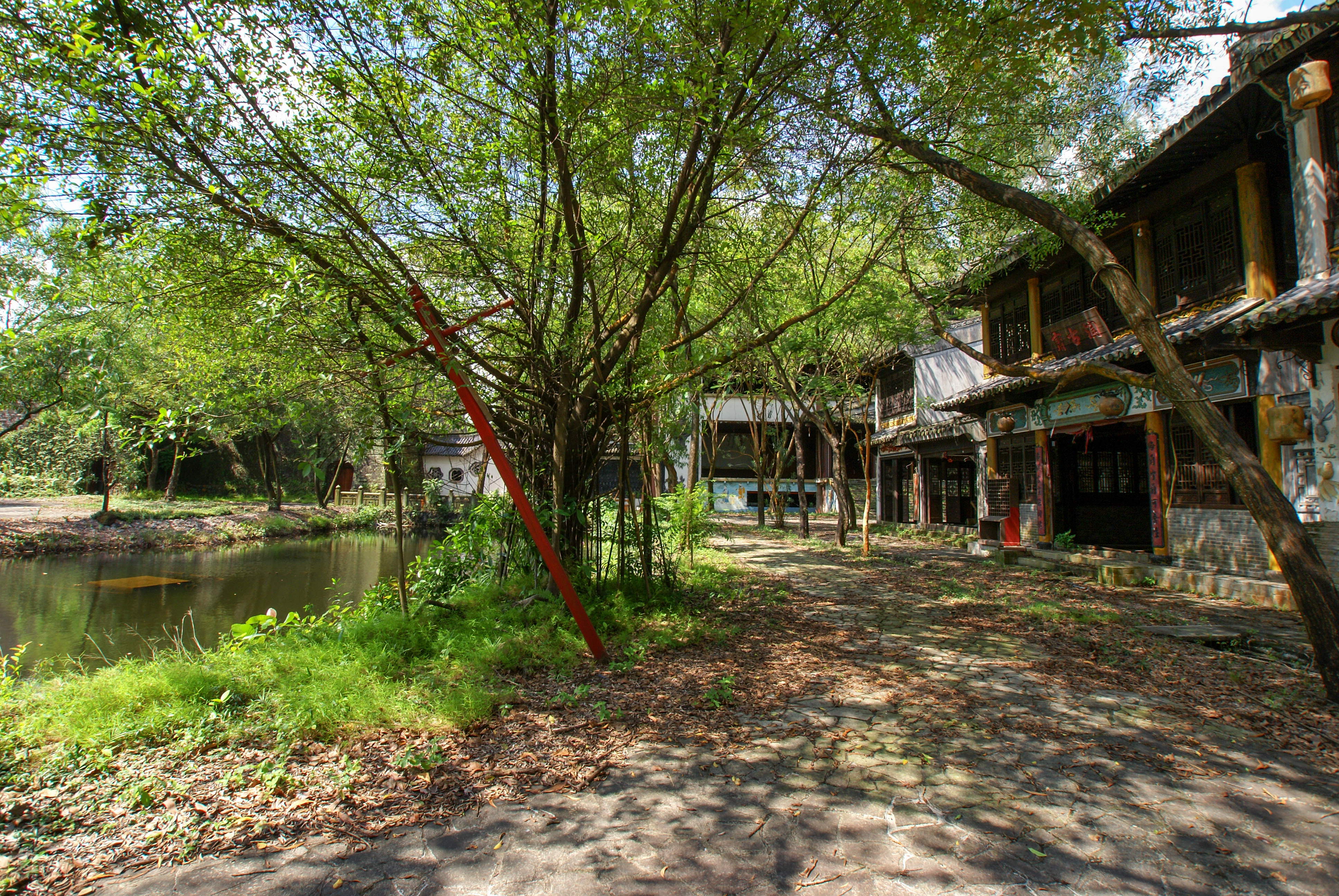 Images courtesy of Daniel Cheong
Images courtesy of Daniel Cheong
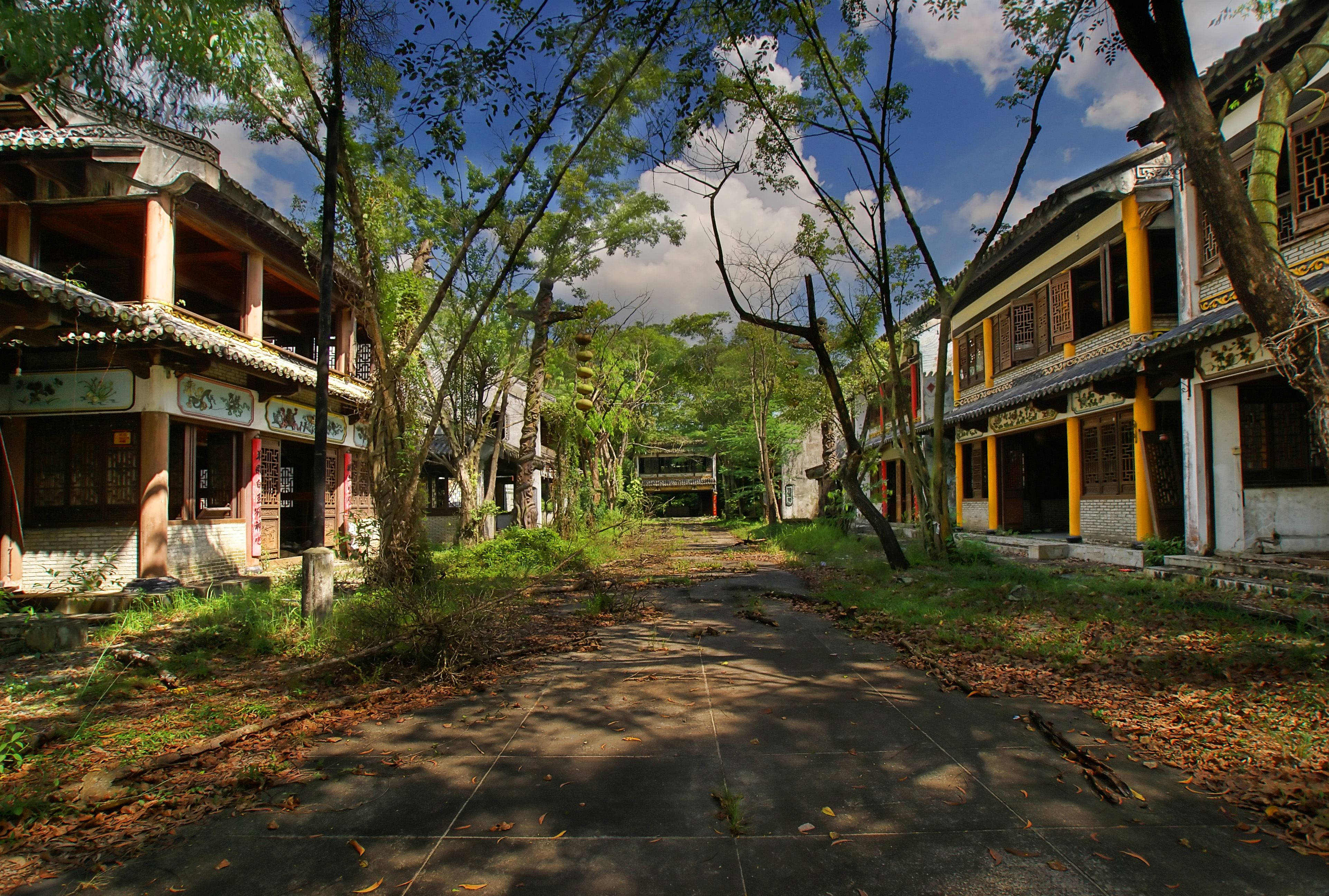 Images courtesy of Daniel Cheong
Images courtesy of Daniel Cheong
Unlike the near-universal "wha, S$15 ah" feeling that the entry into the working park evoked, the park's ruins attracted somewhat more polarised reactions.
Goh visited the place several times after its closure.
Upon seeing the state of the City where he ultimately found his calling, Goh said he felt like he was looking at "the dead body of someone you loved".
For some others, though, the ruins presented a more exciting prospect than its previous higher-functioning iteration.
The pictures you see in this portion of the article were taken by photographer Daniel Cheong, all the way back in 2007.
He had been intrigued by photos of the place he saw on Flickr by another photographer and decided to check it out with a friend.
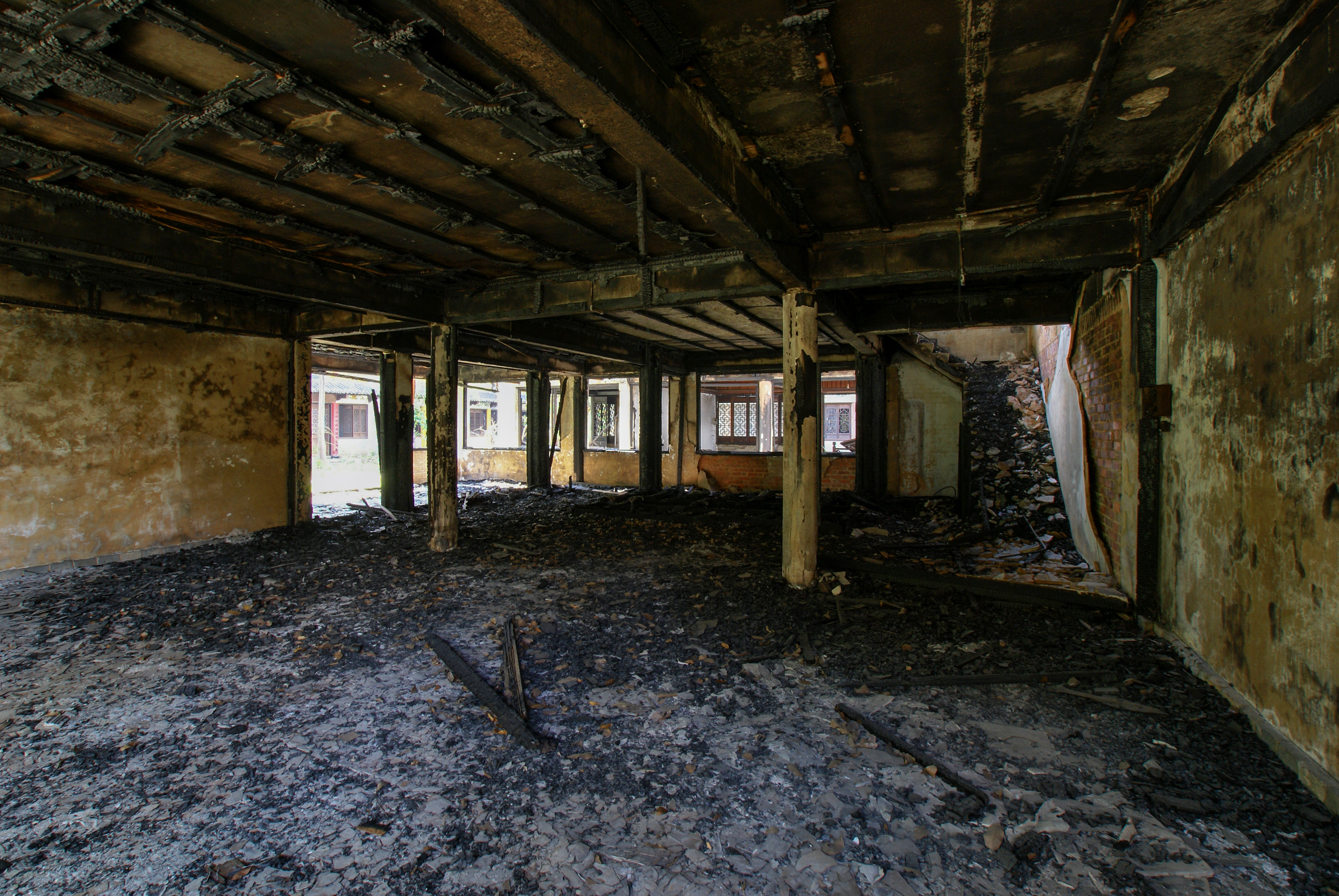 Images courtesy of Daniel Cheong
Images courtesy of Daniel Cheong
The entrance was closed, but they managed to sneak in through an opening. Cheong noted that the place looked "totally abandoned" and without any security.
He seemed to have a good time with the shots as well.
"We spent a few hours shooting there, with the thrill that comes when exploring those decaying places, which always have an eerie atmosphere."
And it wasn't just aesthetically pleasing; it was also fun.
Kelvin Han, who was 13 at the time, vividly recalled exploring the ruins with his friends.
Fresh off their arcade session at Jurong Super Bowl, the friends decided to cross the road to ancient China. Han remembered there usually being one or two security guards, but they weren't there when the secondary school students went into the ruins.
They pushed past the big entrance covered in wooden boards and entered the S$100 million ruins.
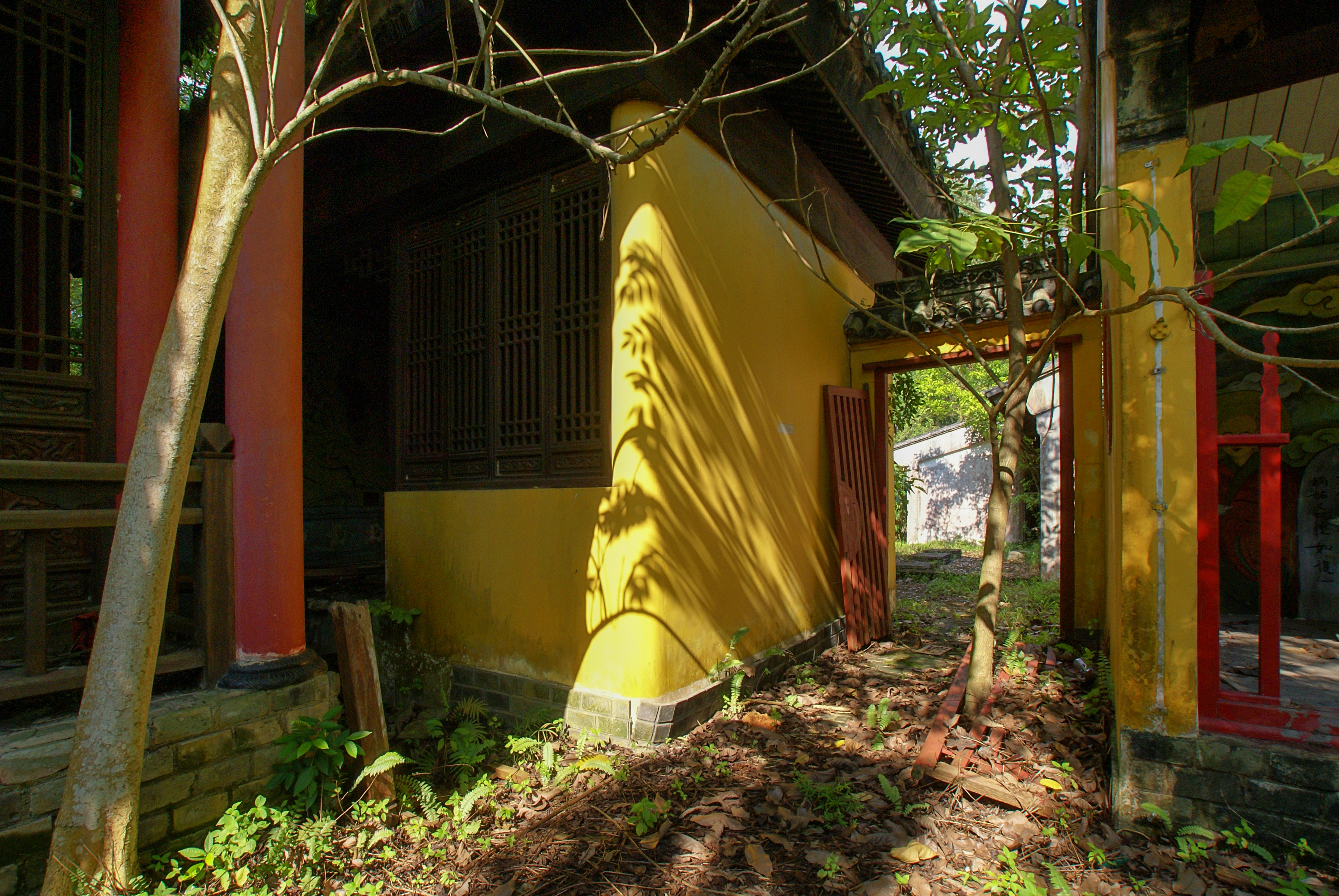 Images courtesy of Daniel Cheong
Images courtesy of Daniel Cheong
Here's how he described the experience:
"It was surreal. It felt like we were in a video game setting. Everything was covered in overgrown vegetation and moss. Some of the 'houses' seemed pretty intact in structure, but very eerie looking. It felt like a place lost in time."
They didn't get too far or stay too long though, not out of boredom, but fear.
"We didn’t want to go in too far because we were afraid we might get lost and not find our way out, because we were just scared 13-year-old boys, so we didn’t stay too long and we got out very quickly."
Which makes sense because this was a 12-hectare plot of land. That's like 18 football fields worth of creepy, ancient Chinese ruins.
Han ultimately only explored the ruins that one time but said it was "very memorable".
"Occasionally I will still dream about exploring the place and finding many more hidden views and things."
That lasting memory from just a single trip. A trip, mind you, without the aid of any theatre shows, S$30 million laser games, Hong Kong stars or earthquake machines.
He got to keep his S$15 as well.
Maybe all that is really needed is to build something interesting and let people have the freedom to explore it.
I had wanted to end this article by asking Han how the experience in the ruins compared to a day out at Tang Dynasty City when it was bustling with live animals, props, and terracotta warriors. But he had one very slight problem in trying to make a comparison.
"The funny thing is, I’ve never been to the place while it was open!"
Cover photo image by Daniel Cheong
If you like what you read, follow us on Facebook, Instagram, Twitter and Telegram to get the latest updates.
